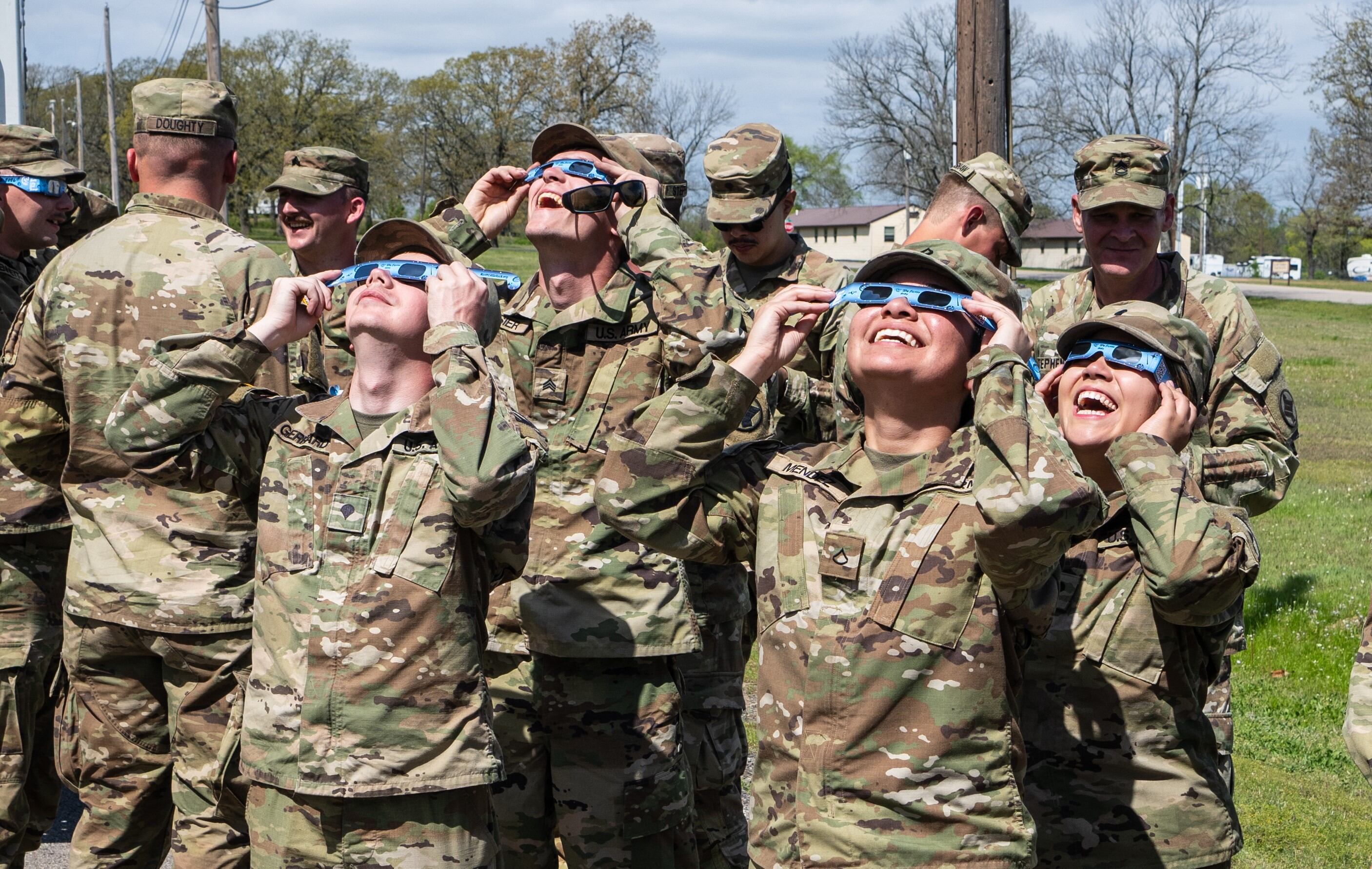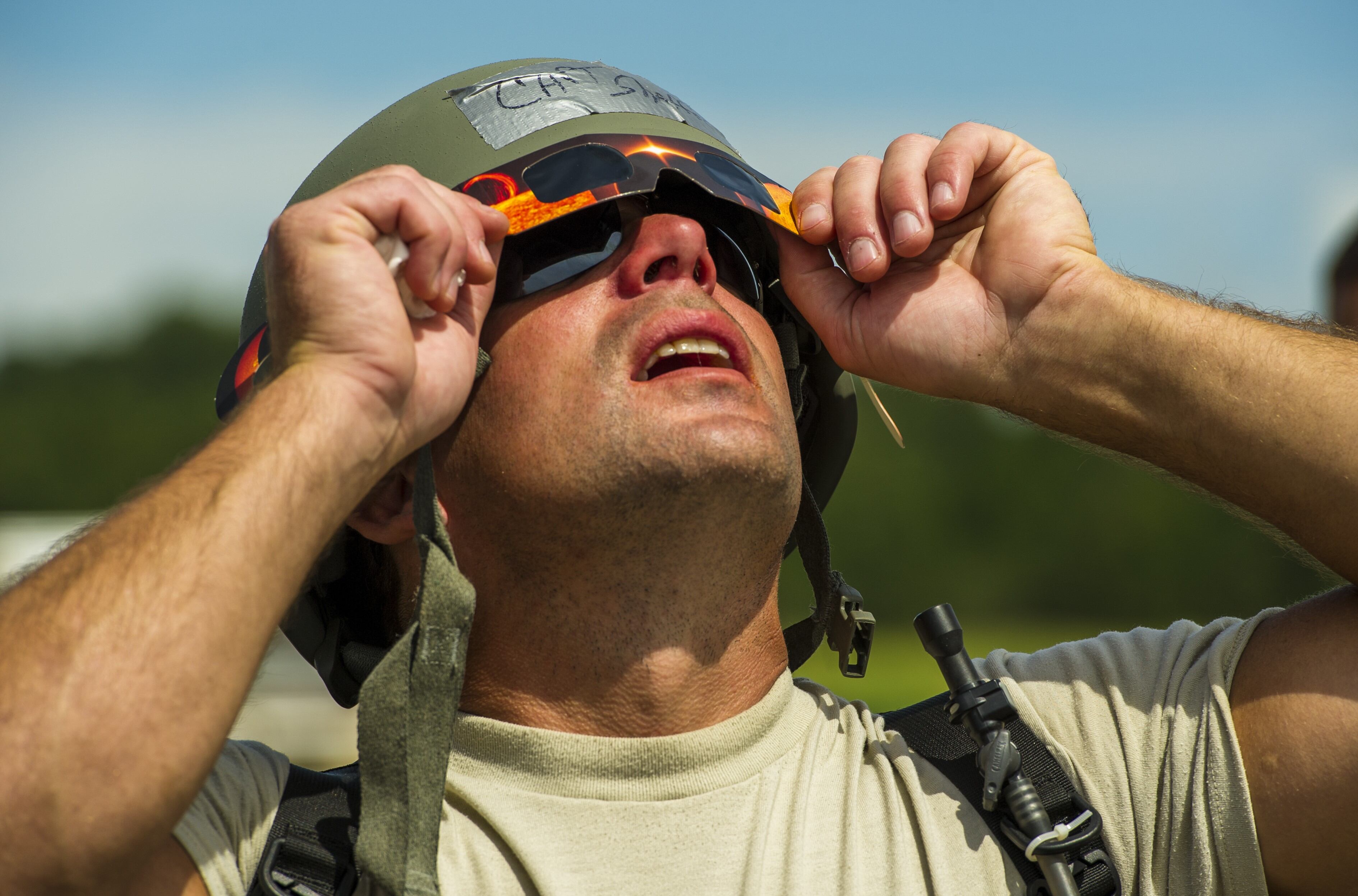Turn around. Every now and then a rare astronomical event occurs in the sky. Turn around. Every now and then the military provides support as the sun is obscured from view.
A total solar eclipse will cross over North America on Monday, briefly shadowing cities and towns from Texas to Maine.
And while this time Bonnie Tyler is not expected to serenade anyone with a pop ballad, those flocking around the country to catch a glimpse of the eclipse can expect that troops are ready to rise above the distant horizon to assist first responders, should the need arise.
National Guard units and military installations from states in the path of totality — where the moon temporarily, completely covers the sun — are arranging plans ahead of a predicted tourism surge.
In Oklahoma, the National Guard plans to be on call to aid local government agencies and first responders with hazardous material response, according to a release.
“This influx of visitors has the potential to overtax local resources and thanks to the training and experience our Guardsmen have working alongside local agencies all across Oklahoma, the [unit] is uniquely qualified to support our fellow Oklahomans,” Lt. Col. Jabonn Flurry, 63rd Civil Support Team commander, said in the statement.
Similarly, a spokesperson from the Illinois National Guard told Military Times their force was coordinating with state emergency management officials to prepare for the expected crowds and traffic, forecasting a small footprint from their 5th Civil Support Team.
The New York National Guard will have 150 soldiers and airmen on standby with 36 vehicles across three locations to aid state or local authorities if asked, as well as CH-47 and aircrew, a spokesperson told Military Times.
Last month, first responders in Arkansas, including the state’s National Guard, conducted a live training exercise to warm up for possible scenarios caused by the increase in guests. They’ll also be distributing roughly 23,000 eclipse glasses at public events and local recruiting stations.

Elsewhere, Fort Cavazos, Texas, is readying itself for an inflow of travelers to Bell County, which recently issued a local emergency declaration due to the anticipated extreme traffic congestion, strain on first responders and shortages on fuel and groceries. The installation is closing certain gates and adding barriers and checkpoints in the training area as a precautionary safety measure, according to a statement.
The military has extended a ray of help to communities of stargazers during past solar eclipses. In 2017, the governor of Oregon authorized the state’s National Guard to activate around six Guard aircraft and 150 service members to assist first responders during a solar eclipse. Plus, other Guard units from around the country, from Nebraska to South Carolina, were on standby to assist if requested.
This year, the path of the eclipse enters the United States in Texas, then travels through Oklahoma, Arkansas, Missouri, Illinois, Kentucky, Indiana, Ohio, Pennsylvania, New York, Vermont, New Hampshire and Maine as well as small parts of Tennessee and Michigan, according to NASA.
But not all Guard units from states in the path of totality are involved in preparation for the upcoming event. Spokespeople from Maine, Pennsylvania and Texas all told Military Times that as of early this week their Guardsmen had not been tasked, or that there were no plans to mobilize units.
How does a total eclipse work? In short, when the moon passes between the sun and Earth, entirely obstructing the face of the star at the center of the solar system, the sky will darken as if it were dawn or dusk, according to NASA. Observers viewing the eclipse from outside the path of totality may still see a partial eclipse, where the moon covers most but not all of the sun, the space agency noted.
According to Navy Capt. Todd Lauby, chief of the Defense Health Agency Vision Center of Excellence, it’s possible to injure your eyes without taking the right kind of safety precautions.
“Only a few seconds of exposure or multiple exposures of shorter duration can damage the sensitive cells in the retina,” he said in a release.
Experts from Wright-Patterson Medical Center’s optometry clinic, located at the Ohio Air Force base expected to be in the path of totality, recommended a number of safety tips for those over the moon to watch the event, including wearing approved special-purpose eclipse glasses.
Another total solar eclipse won’t be visible again from the contiguous U.S. for about two decades — until 2044, making this celestial spectacle one that viewers will likely remember for a long time.
Forever’s gonna start tonight. Forever’s gonna start tonight.
(Disclaimer: Military Times holds no responsibility for this song being stuck in your head the rest of the day.)
Visit NASA’s website for a mobile-friendly or full-screen version of an interactive 2024 total eclipse map.
Jonathan is a staff writer and editor of the Early Bird Brief newsletter for Military Times. Follow him on Twitter @lehrfeld_media




